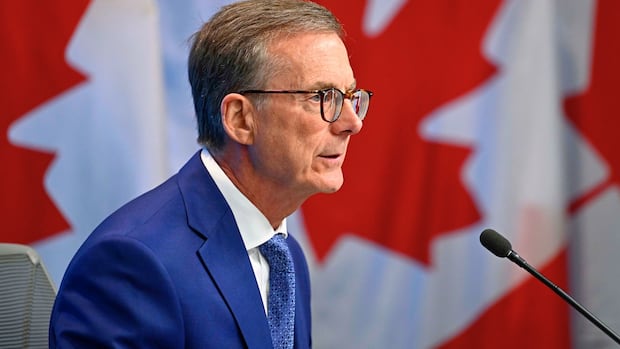
Interest rates in Canada are finally coming down. The Bank of Canada trimmed its key policy rate for the third consecutive time on Wednesday, to 4.25 per cent, continuing an easing cycle that started in June.
If you’re wondering what this means after years of high inflation and several cycles of rising interest rates, you’re not alone. Will high prices finally come back down to earth? Will mortgage rates get any cheaper? And why hasn’t the central bank moved more aggressively?
Here is a breakdown of what it means for Canadians.
With inflation easing, Bank of Canada governor Tiff Macklem announced the third straight cut to Canada’s key interest rate on Wednesday, dropping it by 25 basis points to 4.25 per cent. Macklem said further cuts could follow.
Why did interest rates get so high?
Raising interest rates is primarily done to keep inflation in check.
As Canada was emerging from the COVID-19 pandemic, inflation reached its highest level in decades — 8.1 per cent in June 2022. The Bank of Canada, which typically tries to keep inflation between one and three per cent, responded with a series of rate hikes, taking its key rate from less than 0.5 per cent to five per cent by mid-2023.
Higher interest rates lead to increasing borrowing costs which in turn discourage people from spending and encourage saving.
The Bank of Canada is essentially trying to pull off what economists call a “soft landing” — reining in inflation without slipping into a recession.
Will my groceries be cheaper?
No. Prices are expected to keep rising, though at a much slower pace than in recent years now that inflation has slowed to 2.5 per cent.
“There was a level shift up in overall prices in Canada right after the pandemic and we are not going to see that level shift down. So people should not expect prices of everyday items to start moving back to where they were before the pandemic,” James Orlando, an economist at TD Bank told CBC News.
But the lower rate will make it less painful to borrow money — for a loan, a line of credit or a mortgage, for example.
Does that mean I can finally afford a house?
Buying a house could be a lot more affordable because mortgage rates will be lower than they were a few months ago. Any current homeowners with variable rate mortgages will also see rates drop.
But any homeowners who locked their mortgage at a lower rate during the pandemic and now need to renew will probably end up renewing at a higher rate.
That sort of “interest rate shock” will affect an estimated 2.2 million homeowners — representing 45 per cent of all outstanding mortgages in Canada — in 2024 and 2025 according to data from the Canada Mortgage and Housing Corporation.

Why have the rate cuts been so conservative?
Slashing rates too fast and too soon could spark more inflation.
The Bank of Canada would need to cut rates faster if the economy was doing terribly or if there was a high risk of recession. Now that inflation seems a little bit more in control it has the room to approach rate cuts at a slower and more measured pace, says Orlando.
And, contrary to what some might think, the cuts haven’t been especially conservative when compared to other central banks, according to two economists at the Bank of Montreal.
“In fact, the [Bank of Canada] is leading all major central banks,” Doug Porter and Sal Guatieri said in a statement.
“Only Sweden and Switzerland have cut twice, and some haven’t even begun cutting yet,” such as the U.S. Federal Reserve and the central bank of Australia.
The risks of inflation and of a recession have fallen, analysts generally agree, in light of the Bank of Canada’s easing policy.
The central bank is presumably less concerned that inflation is going to surge again and has been able to focus on other aspects of the economy.
“There’s areas of the economy that are showing weakness, specifically in the labour market, and they want to make sure that they cut interest rates to ensure that there’s not too much downside for the overall economy,” Orlando said.
